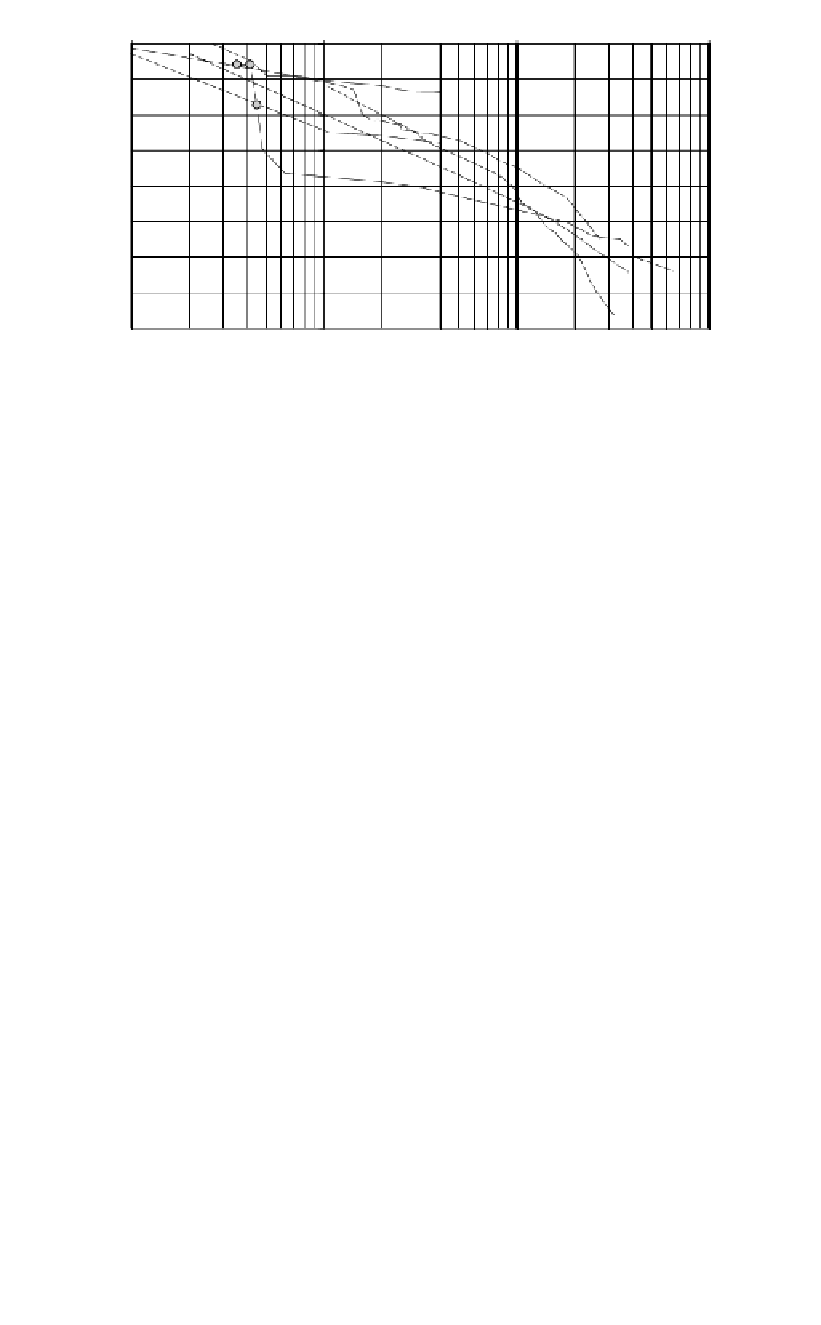Environmental Engineering Reference
In-Depth Information
0.0%
0.2%
0.4%
Acceleration due to raising of
full supply level by 3.05 m
0.6%
0.8%
Wishon
Dix River
Lower Bear No. 1
Lower Bear No. 2
Salt Springs
Courtright
1.0%
1.2%
1.4%
End of first filling
1.6%
0.1
1.0
10.0
100.0
Time (Years since end of main rockfill construction)
Figure 15.36.
Post-construction crest settlement versus time for dumped sluiced rockfill CFRDs
(Hunter, 2003).
full impoundment occurs before completion of construction (or the base time of initial
readings) then a significant component of the deformation is likely to have occurred and
will not be captured by the post-construction monitoring.
For Figures 15.36 to
15.38
and
Table 15.8
the initial time has been established at the
end of construction of the main rockfill.
The general trend of the vertical crest settlement versus log time plot is for rapid rates of
crest settlement during first filling. The steep portions of the curves in Figures 15.36 to 15.38
is typical for CFRDs where first filling started more than about 0.5 years after the end of the
main rockfill construction. The steeper portion of the curve is to be expected given that
stress levels in the rockfill exceed those previously experienced. This is followed by long-term
movements at a near constant creep strain rate (on log scale). The amount of deformation
that occurs during first filling comprises a significant proportion of the total crest settlement,
greater than 50% in a number of cases.
For the dumped and sluiced rockfills Figure 15.36 indicates:
- Significantly greater magnitude of settlement for the dumped and sluiced rockfills com-
pared with compacted rockfills. The rates of settlement (on log scale) post first filling
(time-dependent deformation) are also significantly greater for the dumped rockfills;
- The poorly sluiced rockfills (Salt Springs and Dix River) have higher long-term creep
rates (strain per log cycle of time) than the well-sluiced rockfills.
For the well-compacted rockfills the post-construction crest deformation records pre-
sented in
Figures 15.37
and Figure 15.38 indicate:
- For embankments constructed of rockfills of medium to high intact strength rock sources,
the total magnitude of settlement at 10 years is on average approximately twice that
of quarried, very high strength rockfills. The long-term creep rate is also significantly
higher for the weaker rockfills, 2 to 10 times that of quarried, very high strength
rockfills.
- For the well-compacted gravels (Crotty and Golillas) the post-construction deforma-
tion is less than that for the well-compacted, very high strength quarried rockfills.This
is likely to be due to several reasons, but is considered to be mainly a result of the
rounded shape of the gravels. The point area of contact between particles of rounded






























